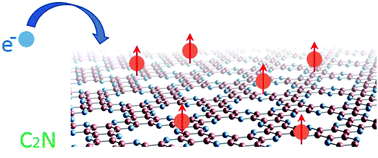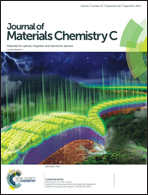Tunable half-metallic magnetism in an atom-thin holey two-dimensional C2N monolayer†
Abstract
Exploring two-dimensional (2D) materials with magnetic ordering is a focus of current research. It remains a challenge to achieve tunable magnetism in a material of one-atom-thickness without introducing extrinsic magnetic atoms or defects. Here, based on first-principles calculations, we propose that tunable ferromagnetism can be realized in the recently synthesized holey 2D C2N (h2D-C2N) monolayer via purely electron doping that can be readily achieved by gating. We show that owing to the prominent van Hove singularity in the band structure, the material exhibits spontaneous ferromagnetism at a relatively low doping density. Remarkably, over a wide doping range of 4 × 1013 cm−2 to 8 × 1013 cm−2, the system becomes half-metallic, with carriers fully spin-polarized. The estimated Curie temperature can be up to 320 K. Besides gating, we find that magnetism can also be effectively tuned by lattice strain. Our result identifies h2D-C2N as the first material with single-atom-thickness that can host gate-tunable room-temperature half-metallic magnetism, suggesting it as a promising platform to explore nanoscale magnetism and flexible spintronic devices.



 Please wait while we load your content...
Please wait while we load your content...